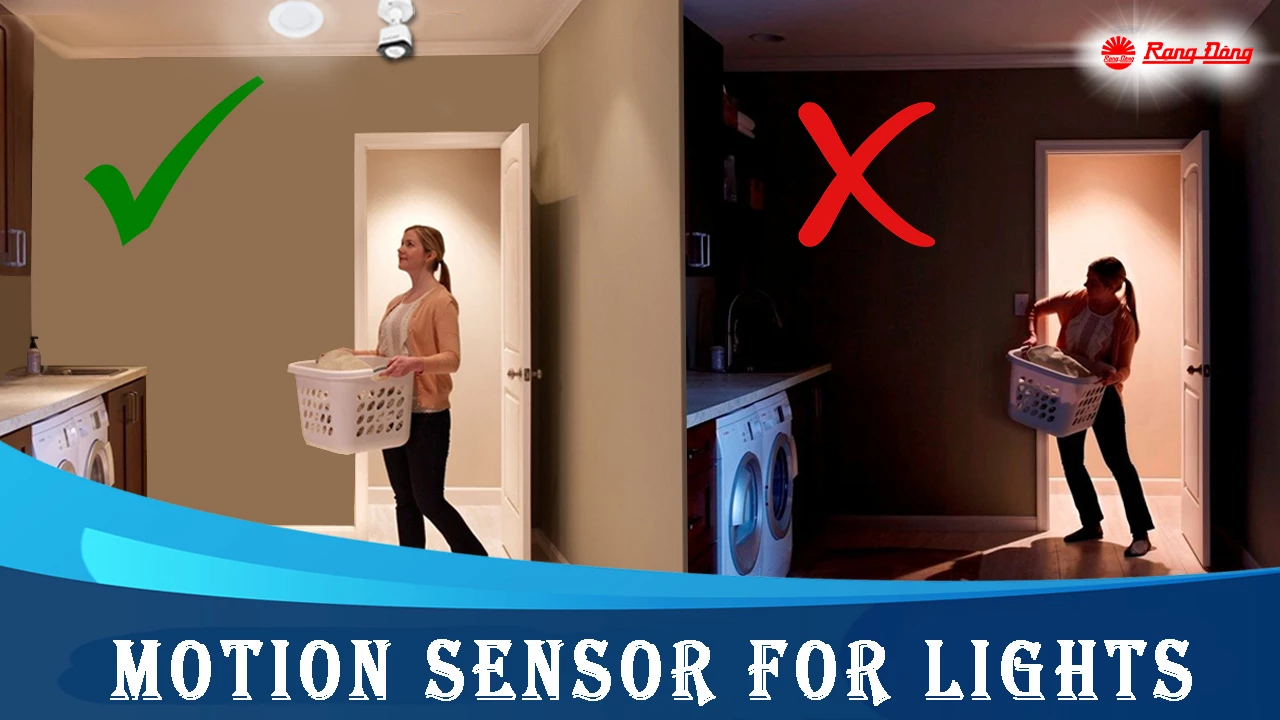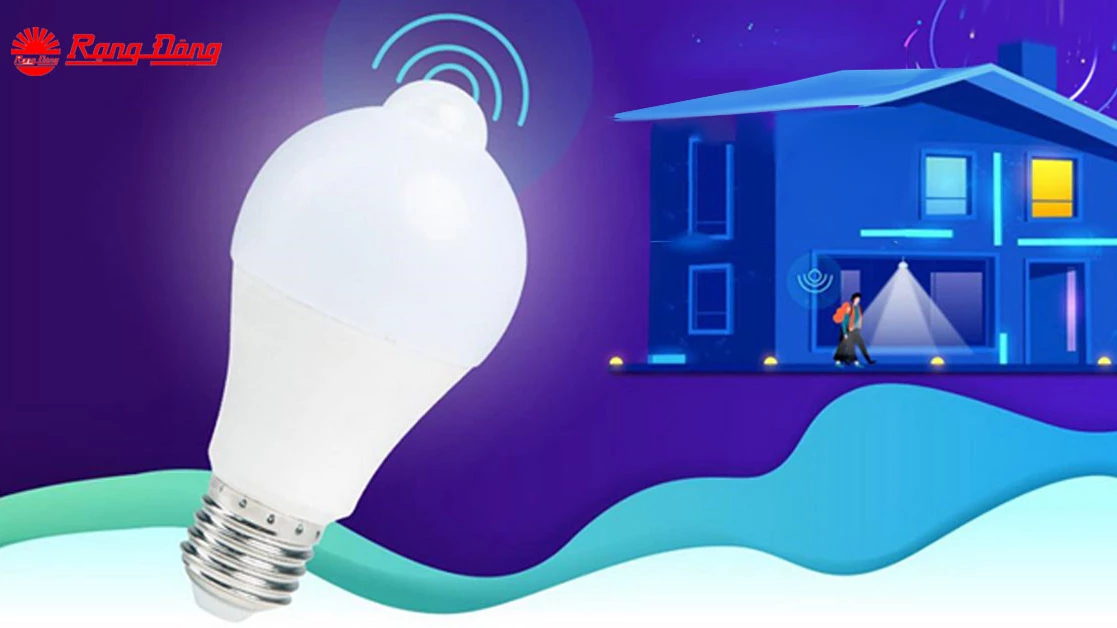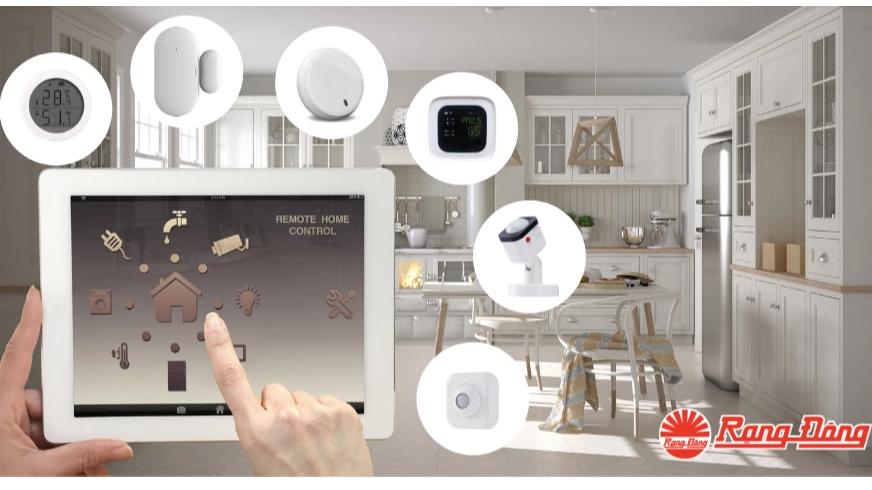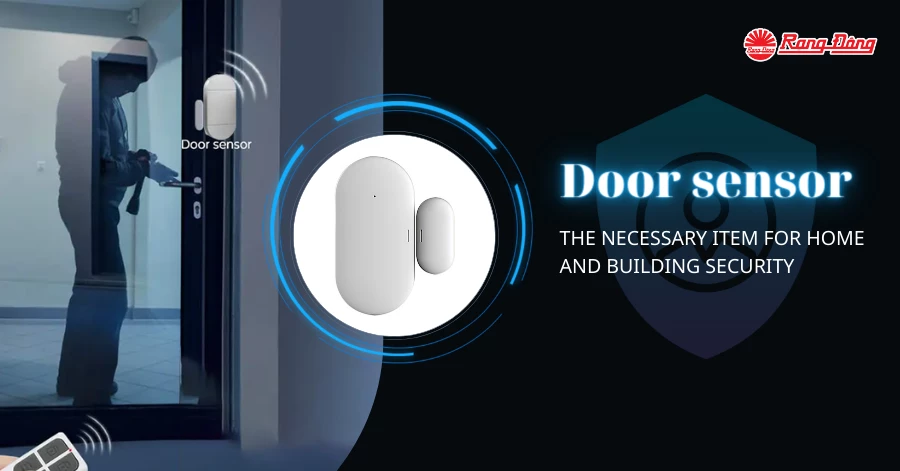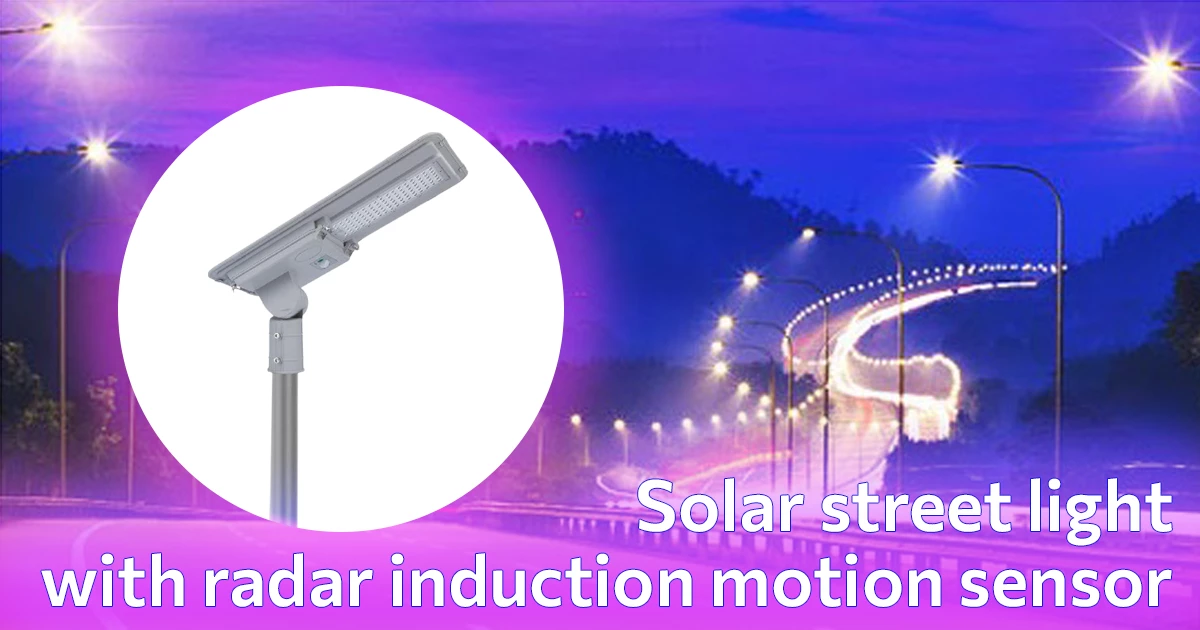
Smoke Detector: Definition, Operating Principles and Applications
Given the main function of the device is to detect smoke early, the smoke detector will quickly alert in case of fire, explosions and transmit signals to the central controller or directly to the phone to activate the alarm, helping promptly detect dangerous incidents.

Definition
A smoke detector is an essential device for our home. Its main function is to detect smoke, quickly alerting users to fires and transmitting signals to the central control unit or directly to our phone to activate an alarm. The device helps timely
Smoke detectors are widely used today, especially in residential and public areas. They come in a variety of styles and are reasonably priced, providing peace of mind by helping us prevent risks and promptly address issues to ensure the safety and security of our home.
Key features
- Early fire hazard detection: In everyday life, even a small oversight can lead to a fire. Installing smoke detectors helps us detect early signs of danger.
- Enhancing fire prevention: Without smoke detectors, it's challenging to detect fire hazards in a timely manner. Early detection is crucial for extinguishing fires, preventing them from spreading, and reducing the impact of toxic smoke, which can be life-threatening.
- Silent protectors from afar: Smoke detectors not only sound alarms within buildings but can also send alerts to smart devices like phones and tablets. This ensures that users receive timely warnings of fire hazards and can take appropriate action, regardless of the user's location.

Structure and operating principle
Structure
Current smoke sensors are made from plastic and electrical and electronic circuit details, including basic parts such as smoke detectors, smoke alarms, LED indicators, battery protection covers and anti-pick locks. The smoke sensor is compactly designed, convenient to transport and install, saves space and ensures the interior aesthetics.
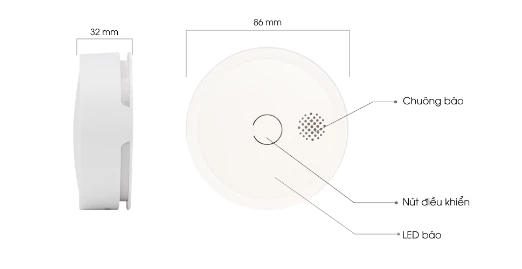
Structure of Rang Dong’s smoke sensor
Operating principle
- Smoke detectors have the ability to recognize and detect abnormal smoke density, thereby issuing danger warnings with lights, sirens or phone notifications, etc. Smoke sensors are divided into many types according to the principle. Principle of ionization smoke detector: Ionization smoke sensors work on the principle of using radioactive isotopes to create ionization in the air. Smoke particles entering the Ionization chamber reduce the voltage at the electrodes. This decrease in current will be detected and alarmed, sending a signal to the fire alarm center.
- Principle of photoelectric smoke detector: Photoelectric smoke sensors use light beams and photoelectric cells (photodiodes) to track smoke particles. When smoke is detected entering the optical chamber, an optical change will occur, leading to a change in voltage, causing the sensor to immediately trigger an alarm with lights and buzzer.
- Principle of wireless smoke detector: Wireless sensors operate on batteries or other power sources and do not require connecting wires to transmit information, making them easy to install and move.
Each wireless smoke sensor has a dip switch with the same settings, connected via the same frequency, ensuring timely warning sounds when detecting abnormal smoke density.
Once smoke is detected, the sensor transmits the signal wirelessly via radio, Wi-Fi, or other wireless protocols to the control center or main detector.
- Principle of wired smoke detector: Wired smoke sensors work similarly to wireless smoke sensors, but the difference is that hard-wired smoke detectors that provide main power to the detector usually run behind a wall or ceiling, and connected directly to the other side of the detector.
Most popular types
Xiaomi Honeywell smoke detector
Xiaomi Honeywell smoke sensor is used in various projects such as hotels, karaoke rooms, restaurants, etc.
The advantage of the Xiaomi Honeywell smoke sensor is that it uses optical smoke sensor technology. The device is highly durable, and compatible with devices in the Apple Homekit system. Xiaomi Honeywell smoke sensor has 2 versions that support both Zigbee and Bluetooth waves, and it can be used on smart devices thanks to the Mihome app. Disadvantages of the product are its high price and high energy consumption. It also requires regular cleaning given its sensitivity to dust or insects.
Tuya Zigbee smoke detector
Tuya Zigbee smoke sensors are quite popular and can be applied in civil and commercial projects such as hotels, shopping centers, restaurants, etc.
The advantage of the Tuya Zigbee smoke sensor is that it uses Ionization sensor technology, which is highly durable. The product is flexible to install, applicable in most types of projects, and is compatible with the Tuya ecosystem and Smart Life app. However, the product's wireless connection lacks stability, sometimes giving false alarms, and the ionization technology uses radioactive substances that are not environmentally friendly.
Aquara Zigbee smoke detector
Aquara Zigbee smoke sensors can be applied in civil and commercial projects such as households, shopping centers, stores, etc.
The advantage of this smoke sensor rests with its dual optical path technology, is highly durable, and connects to the Xiaomi central controller via the Mihome application. The device can be installed and used simply and easily. The disadvantages of the Aquara smoke sensor are that it consumes a lot of electricity, is quite expensive, and requires regular cleaning.
Rang Dong smoke detector
Rang Dong smoke sensor has a sound level greater than or equal to 85 dB, wide monitoring range, convenient installation and use in all types of projects, especially civil and commercial projects such as restaurants, hotels, offices, halls, family houses, etc.
Rang Dong smoke sensor has the outstanding advantage of using wireless sensor technology, ensuring durability and high battery life. In addition, the Rang Dong smoke sensor can connect and work optimally with smart home devices via the RalliSmart application or Bluetooth wireless connection, thereby ensuring timely detection and warning of fire risks. The limitation of the product is its relatively high price, however this price comes with quality and a reputable and thoughtful after-sales warranty.

Application of smoke detector
In homes
Smoke sensors are indispensable equipment in every civil project, especially houses and apartments where living spaces are often closed and it is difficult to detect fires.

Users should choose wireless sensors with enough sensing range for their family. Suitable locations for installing smoke sensors include the ceiling, kitchen, living room, apartment hallway, etc.
In shopping centers, offices
Smoke sensors are applied not only in civil projects but also in large-scale projects such as halls, offices, restaurants, hotels, buildings, malls, etc.
At large commercial buildings, smoke sensors are distributed and installed systematically at important locations, ensuring timely alarm alerts when incidents occur for quick first aid and evacuation.
Should you have any questions or request a quotation of Rang Dong products, please send us an email to: export@rangdong.com.vn.
Our websites: en.rangdong.com.vn and vacuumflask.rangdong.com.vn.




